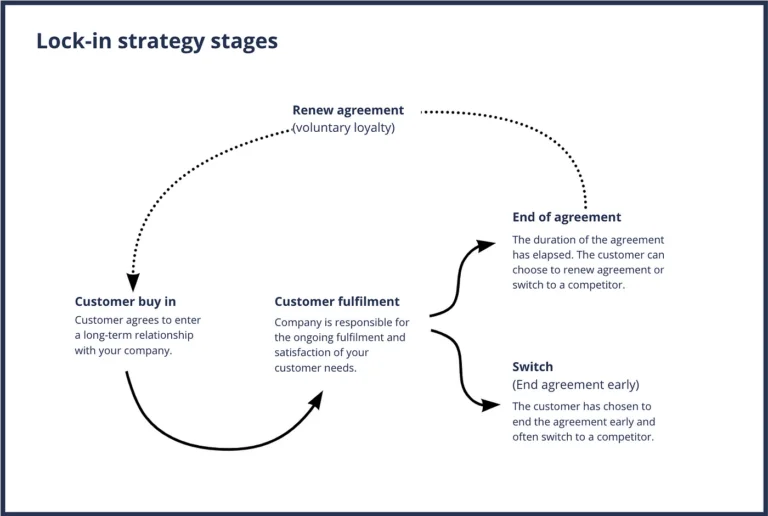In the world of business, customer retention is essential. One way to keep your customers coming back is through a lock in strategy. In this blog, we’ll explore the concept of lock in strategy and how it can benefit your business.
What is Lock in Strategy?
Lock in strategy refers to a business strategy that aims to keep customers coming back by creating barriers to exit. The goal is to create a situation where it is too difficult or too costly for the customer to switch to a competitor.

Types of Lock in Strategy
There are several types of lock in strategy that businesses can use to keep their customers coming back.
Product-based Lock in Strategy: This type of lock in strategy relies on creating a product that is difficult to replace or replicate. For example, Apple’s iOS operating system is unique to their products, making it difficult for users to switch to a different brand.
Price-based Lock in Strategy: This type of lock in strategy relies on pricing strategies to keep customers coming back. For example, loyalty programs that offer discounts or rewards for repeat business can create a financial barrier to exit.
Switching Costs Lock in Strategy: This type of lock in strategy relies on creating a cost to the customer for switching to a competitor. For example, some cell phone providers charge a fee for early termination of a contract.
Contractual Lock in Strategy: This type of lock in strategy relies on contracts to keep customers coming back. For example, gym memberships that require a long-term commitment can create a legal barrier to exit.
Benefits of Lock in Strategy
Lock in strategy can have several benefits for businesses. These include:
Customer Retention: Lock in strategy can help businesses keep their customers coming back, leading to increased revenue and customer loyalty.
Barriers to Entry: Lock in strategy can make it difficult for competitors to enter the market, giving businesses a competitive advantage.
Increased Profitability: By keeping customers coming back, businesses can increase their profitability by reducing marketing and acquisition costs.
Final Thoughts
Lock in strategy is a powerful tool for businesses looking to keep their customers coming back. By creating barriers to exit, businesses can increase customer retention, create barriers to entry, and increase profitability. However, it’s important to use lock in strategy ethically and in a way that benefits both the business and the customer. So, if you’re looking to increase customer loyalty and retention, consider implementing a lock in strategy in your business.
